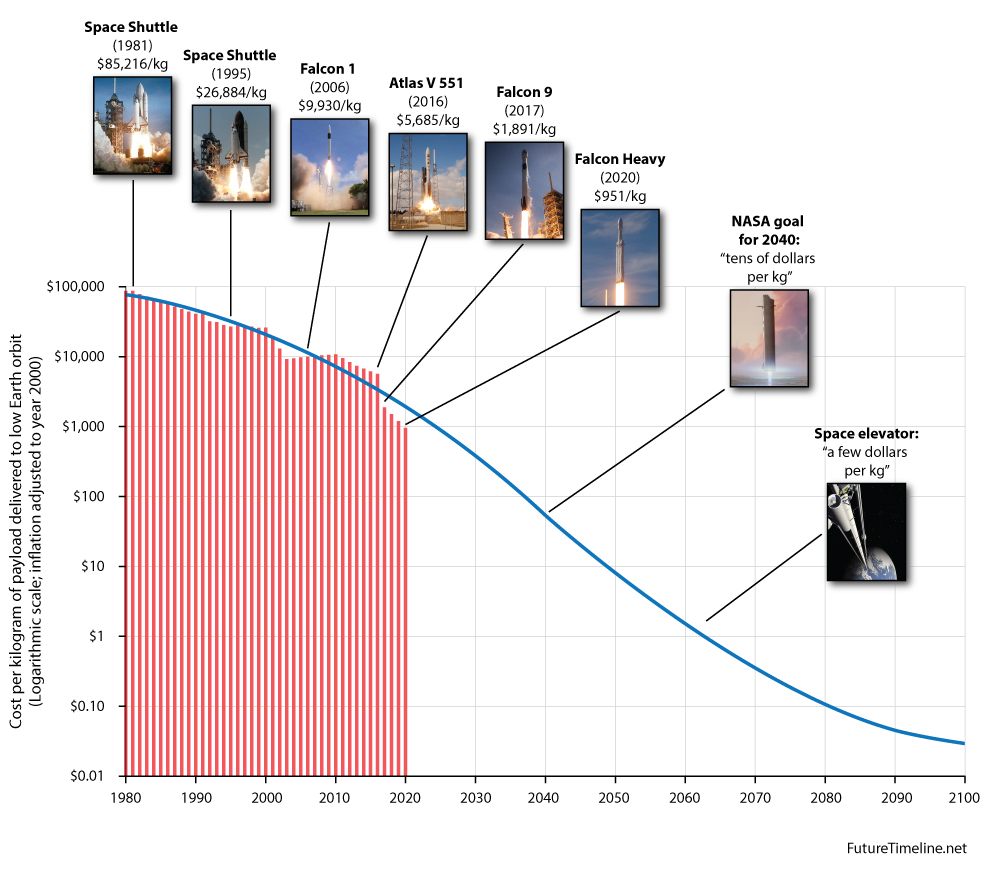
Launch costs to low Earth orbit, 1980-2100 This graph shows the declining costs of launching people and cargo into space. The figures provided here, adjusted for inflation, are for U.S. launch vehicles delivering 1 kg (2.2 lb) into low Earth orbit (LEO). Traditionally, access to space has been extremely expensive. However, prices continue to fall with each passing decade as new technologies are developed and the sector becomes more commercialised. SpaceX, for example, has demonstrated the potential of reusable rockets. Other advances in the future may include lighter materials, the use of inflatable modules, new fuel types, space planes and/or more efficient engines. If the overall trend continues, access to space may become relatively affordable to most people during the second half of this century. Visiting a space hotel could one day be as routine as a holiday overseas. NASA has stated a long-term goal of making LEO accessible for tens of dollars per kilogram by 2040. The agency has also speculated that a space elevator (requiring 15 years to construct) would lower this cost even further, to just a few dollars per kilogram.
Sources: Space Transportation Costs: Trends in Price Per Pound to Orbit 1990-2000 "As of 2003, the average launch cost/lb of payload in the U.S for small, medium, and heavy launches was $8,445, $4,994, and $4,440 respectively." Article from 2006: "A Falcon 1 launch costs US$6.7 million for up to 570 kilogrammes of payload delivered to orbit." Orbit: NASA's Space-Shuttle Program Ends Comparison of orbital launch systems – Wikipedia Much Lower Launch Costs Make Resupply Cheaper Than Recycling for Space Life Support https://en.wikipedia.org/wiki/Falcon_Heavy Article from 2000, discussing the potential for 2040: "Potentially, we're talking about just a few dollars per kg with the elevator."
Image credits: 1981 – NASA 1995 – NASA 2006 – SpaceX [CC-BY-SA-3.0] 2016 – NASA 2017 – Official SpaceX Photos (Bangabandhu Satellite-1 Mission) [CC0 or CC0], via Wikimedia Commons 2020 – SpaceX 2040 – Space X 2060 – NASA
Posted: 1st September 2018. Last updated: 1st September 2018.
If you enjoy our content, please consider sharing it:
|







